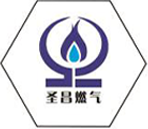
Nov . 19, 2024 18:11
Back to list
Natural Gas Pressure Regulator for Efficient Gas Supply Management
Natural Gas Pressure Reducers An Essential Component in Gas Distribution
Natural gas is a vital source of energy, powering homes, industries, and vehicles around the globe. However, to ensure safety and efficient delivery, the pressure of natural gas must be carefully regulated. This is where natural gas pressure reducers come into play, serving as critical components in the gas distribution system.
Understanding Natural Gas Pressure
Natural gas is supplied from various sources, such as underground wells or gas processing plants, at high pressures to facilitate its transport through pipelines. However, once the gas reaches local distribution systems, its pressure needs to be significantly reduced to a safe and usable level. Natural gas pressure reducers, also known as pressure regulators, are devices designed to fulfill this function, ensuring that the gas is delivered at a consistent and appropriate pressure for residential and commercial use.
How Pressure Reducers Work
.
When the inlet pressure exceeds the preset level, the diaphragm opens, allowing gas to pass through. Conversely, when the pressure drops below the designated level, the diaphragm closes off the flow. This mechanism ensures that the output pressure remains within a specific range, thus preventing fluctuations that could lead to unsafe conditions or inefficient gas usage.
مخفض ضغط الغاز الطبيعي

Importance of Pressure Regulation
Effective pressure regulation is crucial for several reasons. Firstly, it enhances safety. High-pressure gas can be hazardous, leading to potential leaks or explosions if not properly managed. By reducing the pressure to safe levels, pressure reducers significantly minimize these risks.
Secondly, pressure regulation improves energy efficiency. If the pressure is too high, it can cause excessive wear on appliances and gas systems, leading to higher maintenance costs and reduced efficiency. By maintaining a consistent pressure, pressure reducers help ensure that appliances operate optimally, resulting in lower energy bills and reduced environmental impact.
Additionally, accurate pressure regulation is essential for compliance with safety regulations and standards set by various authorities. Natural gas utilities are required to adhere to strict guidelines to ensure public safety, and pressure reducers play a central role in meeting these regulations.
Conclusion
In summary, natural gas pressure reducers are indispensable components in the natural gas distribution system. They enhance safety by controlling high-pressure gas delivery, improve energy efficiency by maintaining optimal operating conditions for appliances, and ensure compliance with regulatory standards. As natural gas continues to be a key energy source for millions, the importance of these devices cannot be overstated. Investing in reliable and efficient pressure reduction technology is essential for a safer, more sustainable energy future.
Latest news
-
Safety Valve Spring-Loaded Design Overpressure ProtectionNewsJul.25,2025
-
Precision Voltage Regulator AC5 Accuracy Grade PerformanceNewsJul.25,2025
-
Natural Gas Pressure Regulating Skid Industrial Pipeline ApplicationsNewsJul.25,2025
-
Natural Gas Filter Stainless Steel Mesh Element DesignNewsJul.25,2025
-
Gas Pressure Regulator Valve Direct-Acting Spring-Loaded DesignNewsJul.25,2025
-
Decompression Equipment Multi-Stage Heat Exchange System DesignNewsJul.25,2025

